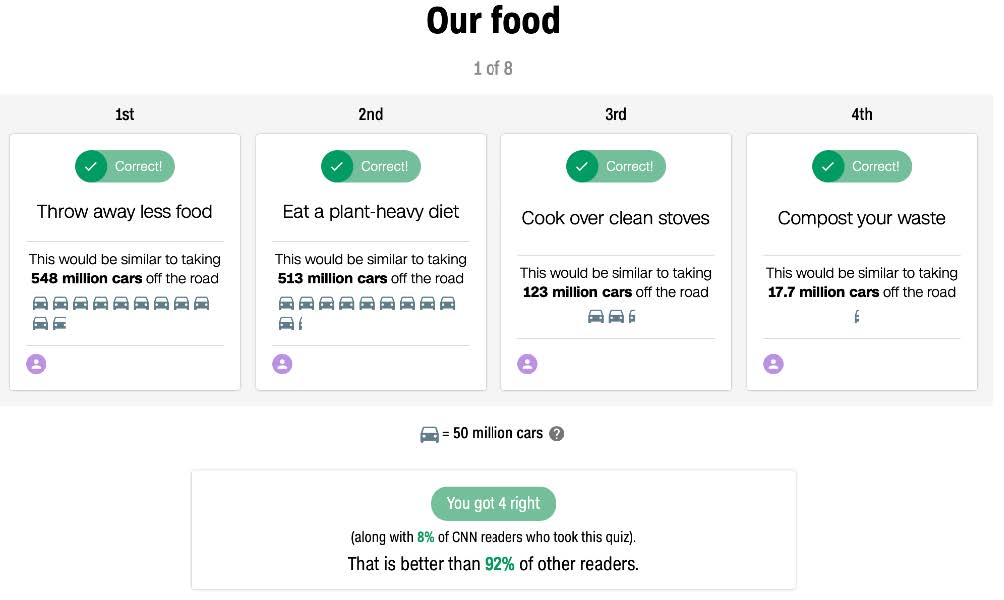Supposedly sustainability starts at home but what happened to the office and why do we not look at sustainability at work? As part of the Sustainable Marketer Manifesto, introduced by #sustainblemarketing (Can Marketing Save the Planet, 2022) it is time to use marketing to save the planet. The first knowledge piece is on ‘Curb your carbon” and according to Kann et al. (2019) one-third of all food raised or grown never makes it to the table. Food waste accounts for circa. 8% of all global emissions. If we look at the outputs below it is interesting as to what activities make a more sustainable world. The metrics speak for themselves and if you ranked these in the same order then you are already ahead of the game.

The next thing is transport and if we all drove an electric car then it would be similar to taking 83.9 million cars of the road. This may not apply to business but how we fundamentally get to work and ship goods throughout the world makes a difference. This is also true of shipping goods more effectively which would take over 60 million cars of the road. Project Drawdown analysis (Kann et al. 2019) suggests that if 16% of all journeys where made in an electric car then it would be 10 gigaton of carbon emissions out of the air. Applying logical reductions in shipping and making sure that loads are full and there is no space is not only better for the environment but actually reduces cost of materials. This work-based sustainable approach can be replicated across the supply chain or operation in order to reduce costs.
A sustainable approach can also be pushed “upstream” or “downstream” (Ellen MacArthur Foundation, 2020) when it comes to packaging with the former being the way forward to stop the introduction of material into the supply chain. With only 8% of all plastics produced (Polman and Winston, 2021) being recycled there is already enough material in the world to fulfil our needs for years to come. The ‘make-take-waste’ economy (Ellen MacArthur Foundation, 2022) needs to be challenged and we not only need to recover the waste but make sure there is not a requirement to put more new material into “make”. The removal of waste from ever being created is a difficult pill to swallow but maybe this is the pivot companies will need to achieve in order to remain sustainable or even viable in the future.
The circular economy is a good start at work and where you or your company impact the butterfly diagram below (Ellen MacArthur Foundation, 2022) and how you can effect change is part of the discussion. Looking at the impact your company has and how to effect it is not just a question for senior executives but all stakeholders in the business.

It is important to note that companies that ranked high on purpose (Polman and Winston, 2021) have a 56 percent higher total shareholder return of a five year period. It also results in a 40 percent higher retention in employees and consumers are two-thirds more likely to switch to a more purpose driven brand. The knowledge can also be supported by the UN’s 17 SDG’s (Sustainable Development Goals) which look at the application of seventeen goals across a wide range of topics to feed into the sustainable future that is required for life in general. This “universal call to action to end poverty, protect the planet, and ensure that by 2030 all people enjoy peace and prosperity” (United Nations Development Programme, 2022) is a great framework to use and understand.
The effect of any change in activity may be minimal in the scheme of things but not starting to look at how we can become more sustainable is probably a bigger failing. The outcome might never be obtaining a Net Positive position (Polman and Winston, 2021) or even Net Zero one but the opportunity is one to take now, because companies are built and grow rapidly in times of change. Some of the biggest companies in the world and oldest where created in times of turmoil or radical change. So it could be that you might just miss out on an opportunity that is a once in a lifetime, a radical shift to something that is more sustainable and gives back more to the world than it takes.
| Can Marketing Save the Planet (2022) Available at https://www.canmarketingsavetheplanet.com/ learningzone [Accessed online October 2022] |
| Ellen Macarthur (2019) Circular economy systems diagram. https://ellenmacarthurfoundation.org/circular- economy-diagram |
| Ellen MacArthur (2020) Upstream Innovation : A guide to packaging solutions. |
| Ellen Macarthur Foundation (2022) Circular Economy Introduction https://ellenmacarthurfoundation.org/ topics/circular-economy-introduction/overview [Accessed online October 2022] |
| Kann, D., Hop, W., Jones,J., and O’Key,S. (2019) CNN : The most effective ways to curb climate change might surprise you. Available at https://edition.cnn.com/interactive/2019/04/specials/climate-change- solutions-quiz/index.html [Accessed online October 2022] |
| Polman, P. And Winston, A. (2021) Net Positive : How courageous companies thrive by giving more than they take. |
| United Nations Development Programme (2022) Available at https://www.undp.org/sustainable- development-goals [Accessed online October 2022] |
